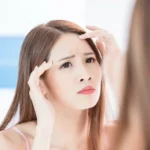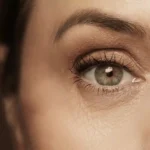THE WHAT? The Tata Group is set to re-enter the Indian cosmetics market following its exit 23 years ago.
THE DETAILS Speaking in an interview with Bloomsberg, Noel Tata, non-executive chairman of Trent, a Tata Group unit operating a chain of retail stores, stated that beauty will now be a ‘key focus’ for the company.
He continued, “Extended product line and experimentation with formats for these products are in the offing as we see these as growth areas in retail.”
The Tata Group is mulling the development of own-brand cosmetic lines under the Trent umbrella, which will be a vehicle of growth, according to the company. These would retail via large-sized outlets under Westside as well as standalone stores and online.
Discussing make-up and hair-care products, Tata said, “I feel that we have barely scratched the surface in these categories and a significant part of these markets are still unorganized and a shift to organized retail is bound to happen. We are also seeing a shift in consumer behavior preferring more fashionable products in these categories.”
THE WHY? With the Indian cosmetics and beauty market projected to nearly double by 2025 from US$11 million in 2017, according to Statista, it’s little wonder the Tata Group is looking to make a comeback in the arena.
The company is also looking to capitalize on the e-commerce growth during the pandemic. Tata stated, “I see the digital opportunity helping us reach more customers wherever they are.”
Aesthetic medicine products are developed and regulated to meet stringent safety and efficacy standards. They are typically administered by trained healthcare professionals such as dermatologists, plastic surgeons, and specialized nurses in clinical settings. These products aim to provide effective solutions for cosmetic enhancement, skin rejuvenation, and overall aesthetic improvement, contributing to both physical appearance and self-confidence.
Key categories of aesthetic medicine products include:
-
Injectables: This category includes products such as dermal fillers, botulinum toxins (e.g., Botox), and collagen stimulators. These injectables are used to smooth wrinkles, add volume, and improve facial contours.
-
Skin Rejuvenation Treatments: Products like chemical peels, microdermabrasion systems, and laser devices are used to improve skin texture, reduce pigmentation irregularities, and enhance overall skin tone.
-
Skincare Products: These include medical-grade cleansers, moisturizers, serums, and topical treatments containing active ingredients like retinoids, antioxidants, and growth factors. They are formulated to address specific skin concerns such as acne, aging, and hyperpigmentation.
-
Hair Restoration Products: Medical treatments and products designed to promote hair growth and treat conditions such as male and female pattern baldness.
-
Body Contouring and Fat Reduction: Devices and products used for non-surgical body sculpting, such as cryolipolysis (cool sculpting) devices and injectable lipolytics.
-
Cosmeceuticals: High-performance skincare products that bridge the gap between cosmetics and pharmaceuticals, often containing potent ingredients with proven clinical benefits.
-
Wound Care and Scar Management: Products like silicone sheets, gels, and advanced wound dressings used to improve healing and reduce the appearance of scars.





